Agri Products
Alfalfa
Alfalfa is the world’s largest forage crop and provides more protein than most other forage crops.Matra Asia is importing its Alfalfa seed from Australia which are prepared with Agri Cote Technology. Alfalfa is harvested as hay crop, haylage with high moisture & fed as green chop for low to high yielding animals..
- 100% pure seed imported from Australian
- Prepared with Agri Cote Technology
- 5 to 9 cuts annually depends on area and finish product
- 100+ MT green fodder annually
- Excellent results in sandy loam soils
BENEFITS
Alfalfa is primarily a useful forage crop.It is grazed, cut for hay or used as Haylage from many decades.
- Alfalfa is an excellent fodder for cattles which increases the milk and meat production.
- In lean season, Alfalfa hay plays a vital role to fulfill the nutritional deficiency of animals.
Nutritional Values
Alfalfa has following Nutritional Values
- Protein 22% (Directly links to management factors)
- Grass Energy 18 mj / kg DM
- Fiber 26% DM
- Dry Matter 20% as feed
Sowing Time
Best Sowing time is from October to the end of November. Sowing continues till end December and again in February also.
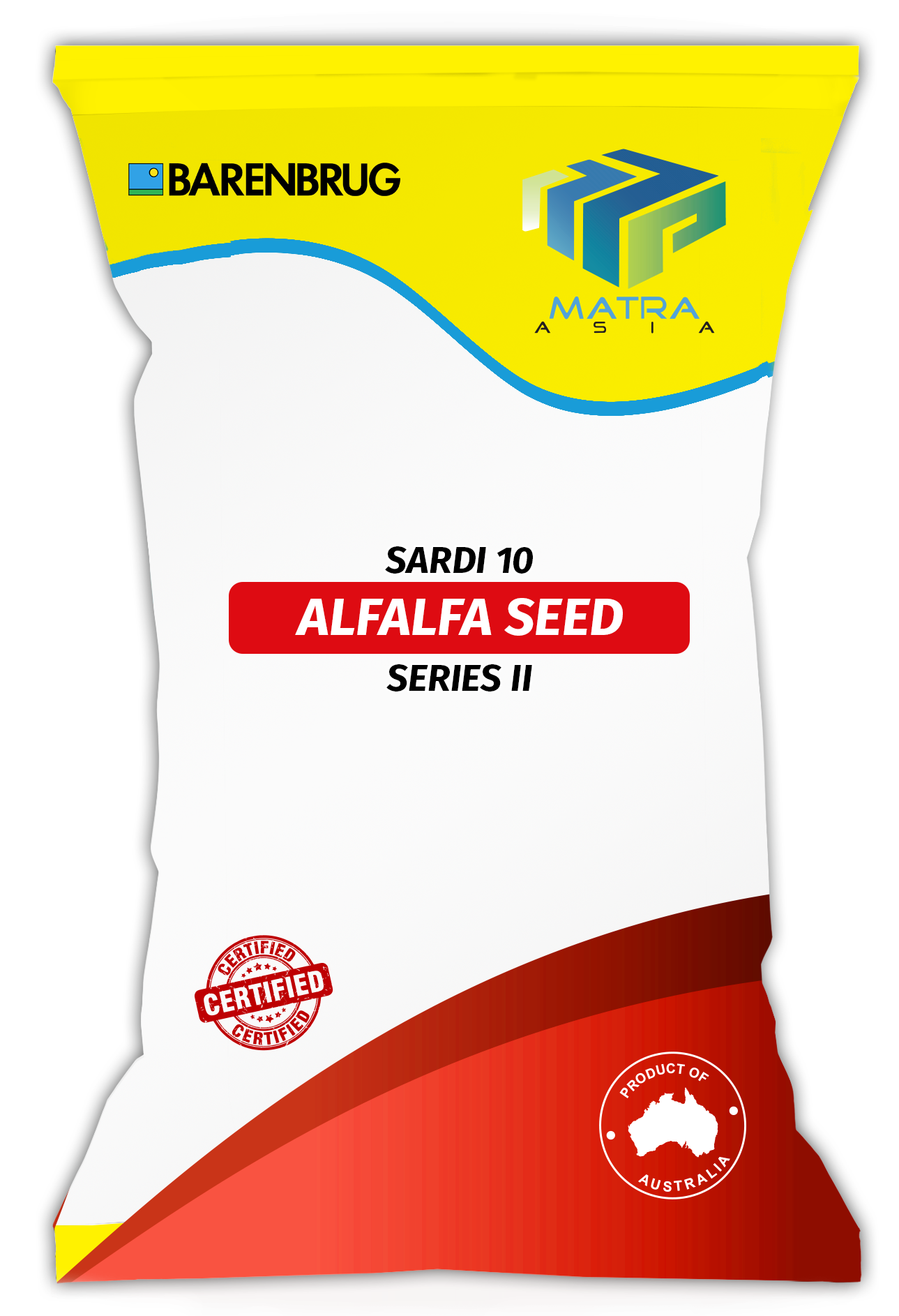
Seed Rate
10kg imported Alfalfa seed is recommended for 1 acre. However farmers' preference is 8 kg to 12 kg/ acre depending on weather and soil condition. Alfalfa high Fall Dormancy varieties recommended for lower and Punjab & Sindh. However, for central Punjab and KPK, lower Fall Dormancy varieties are more suitable for good production. Alfalfa crops have good yields in sandy loam soils rather than hard clay soils.
Instructions for Hay Production
After cutting of Alfalfa crops, keep the crop in direct sunlight for 1 to 2 days and let it dry to 85%. Best hay moisture is between 12% to 14%. Above 18% moisture, there is a chance of fungal infestation in hay stakes. Alfalfa harvesting time and crop stage decides the nutritional profile and further cuts in a year. Alfalfa High Fall Dormancy varieties give quick cuts as temperature goes high from April onward.
Yield Parameters
Alfalfa yield is highly dependable on the following factors.
- Pest attack from February onward.
- Irrigation requirement from April onward
- Weeds in Monsoon Season
- Day & Night temperature fluctuation in March
Harvest the Alfalfa crop when the crop height is 2ft depending on the area, the crop gives 5-9 cuttings annually & having yield 150 tonnes fodders per year. Harvest should be 4 inch above ground level.
Mombasa Guinea Grass
Mombasa grass is tall tropical grass, leafy and very suitable for cut-and-carry. It is very productive in yields producing between 8 to 10 MT green fodder per cut on good soils.
BENEFITS
The fodder made from Mombasa Grass is full of leaves fodder for Summer Season.
- Increases milk & meat production.
- More leaf to stem ratio.
- 5 to 6 cuttings annually.
- 8 to 10 tones green fodder per cut.
- Good capacity to bear intense hot weather conditions, especially in the rainy season.
Nutritional Values
With Mombasa Grass, milk production increase in dry/ monsoon season rose by 11% and 23% due to good nutritional values
- Protein 12 -14 %
- Grass Energy 18 mg / kg DM
- Fiber 26% DM
- Dry Matter 24% as feed
Sowing Time
Sowing time for Mombasa grass starts from mid February to October.
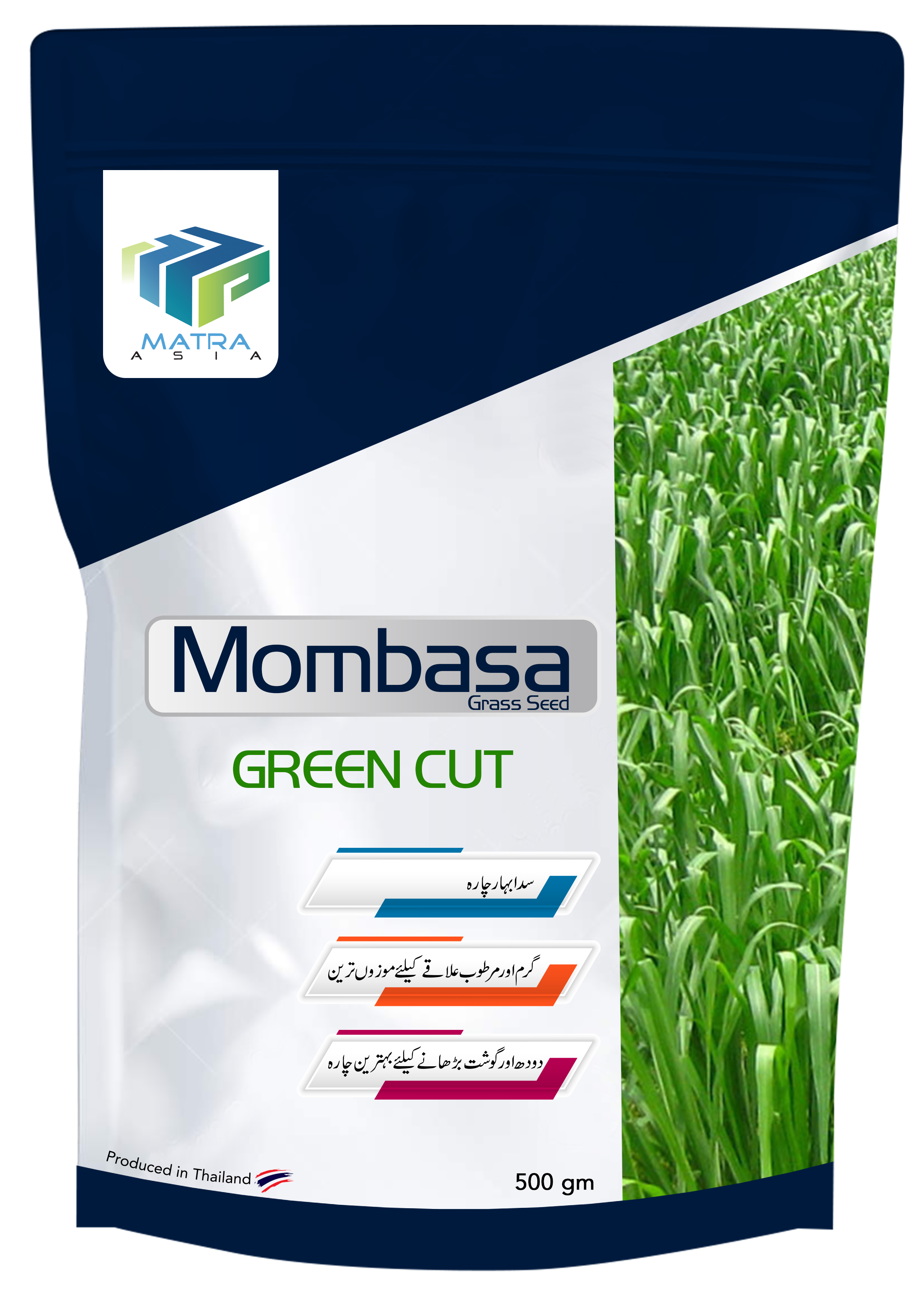
Sowing Method
Sowing of Mombasa grass can be done either by direct seeding on furrows or broadcast method. Sowing after nursery preparation is also recommended but it is a laborious method.
Seed Rate
1 kg of Mombasa grass seed is enough for 1 acre of land.
Yield Parameters
Harvesting of Mombasa grass can be done when the crop height is 5-6ft. Depending on the area, the crop will give 5 - 6 cuttings annually and yield 8 to 10 MT per cut. The Mombasa crop should be harvested at 4 inch height above ground level.
Rhodes Grass Crop Management
Rhodes grass is a perennial tropical grass. Matra Asia is importing Rhodes Grass seeds from Royal Barenbrug Australia which are prepared with Agri Cote Technology. It is a useful forage of pasture and hay, drought-resistant and very productive.
Rhodes Grass is one of the most palatable grass to feed your animals.
- 100% pure seed imported from Australian
- Prepared with Agri Cote Technology
- 7 to 8 cuts annually
- More than 70 MT green fodder annually
- Excellent results in salt affected lands
BENEFITS
Rhodes grass is primarily a useful forage of moderate to high quality for milking and fattening animals. It is grazed, cut for hay or used as deferred feed.
- Rhodes Grass is an excellent fodder for cattles which increases the milk and meat production
- In lean season, Rhodes Grass hay plays a vital role to fulfill the Roughage deficiency of animal feed.
Nutritional Values
Rhodes Grass has following Nutritional Values
- Protein 10-12 %
- Grass Energy 18.3 mj / kg DM
- Fiber 36% DM
- Dry Matter 24.9% as feed
Sowing Time
Rhodes grass Sowing time starts from Mid February to End October in Punjab and Upper Sindh.
In lower Sindh, Rhodes grass sowing season continues till End of November. In peak summer season, May till August is not suitable for Rhodes sowing.
Rhodes grass sowing in high salt affected and sandy areas are also recommended from November till March to get good germination and root development.
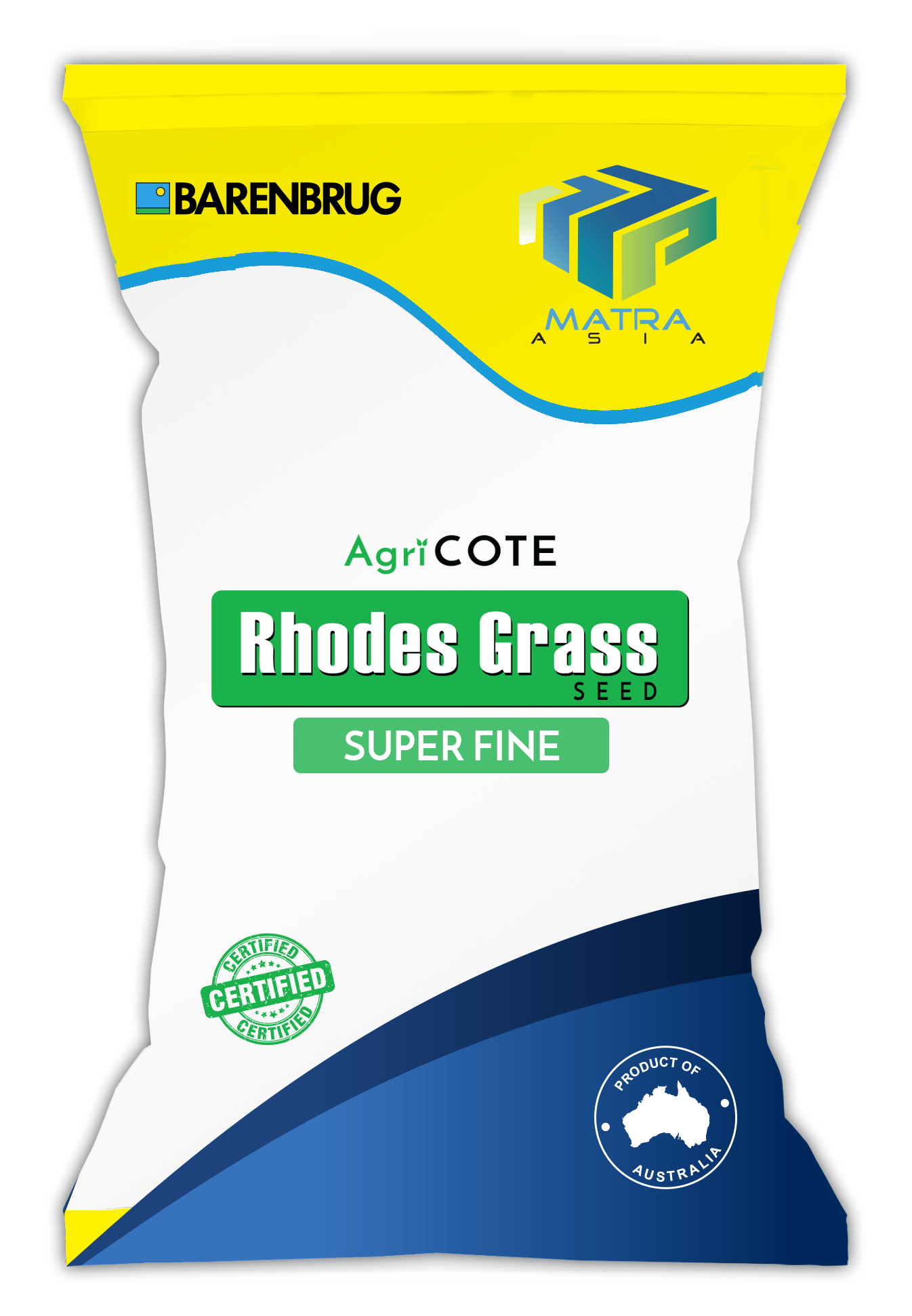
Seed Rate
8kg Rhodes Grass seed is recommended for 1 acre land. However, Farmer 6-10 Kg seed as per land and season demand.
Instructions for Hay Production
After cutting of fodder, keeps the fodder in sun light for 3 to 4 days and let it dry
Harvesting & Yield Parameters
“Never harvest first cut before 45 days after sowing”
Harvest the Rhodes grass crop when the crop height is 2 feet to 2.5 feet depending on the area & season. Second recommendation is to cut it after 30 days. Rhodes Grass crop gives 7 - 8 cuts annually & having yield 70 MT fodders per year. Harvest Rhodes grass crop above 4 inch above ground level for quick regrowth. Early harvesting gives good protein content in crops which deplete on a daily basis when the crop gets mature.
Rye Grass
Ryegrass is a perennial tropical grass. Matra Asia is importing these ryegrass seeds from Australia. These are useful forage for pasture and haylage, high in protein. Ryegrass is one of the most palatable and nutritious grass to feed your animals.
BENEFITS
Ryegrass is primarily a useful forage crop. It is grazed, cut for haylage or used as deferred feed. Moreover,
- Ryegrass is primarily a useful forage crop. It is grazed, cut for haylage or used as deferred feed. Moreover,
- Ryegrass is excellent fodder for cattles which increases the milk and meat production.
Nutritional Values
Ryegrass has following nutritional values:
- Protein 22 %
- Grass Energy 18 mj / kg DM
- Fiber 26% DM
- Dry Matter 20% as feed
Sowing Time
Best Sowing time for ryegrass is from September to the end of November. It grows well on soils ranging from poorly drained clays to deep sands.
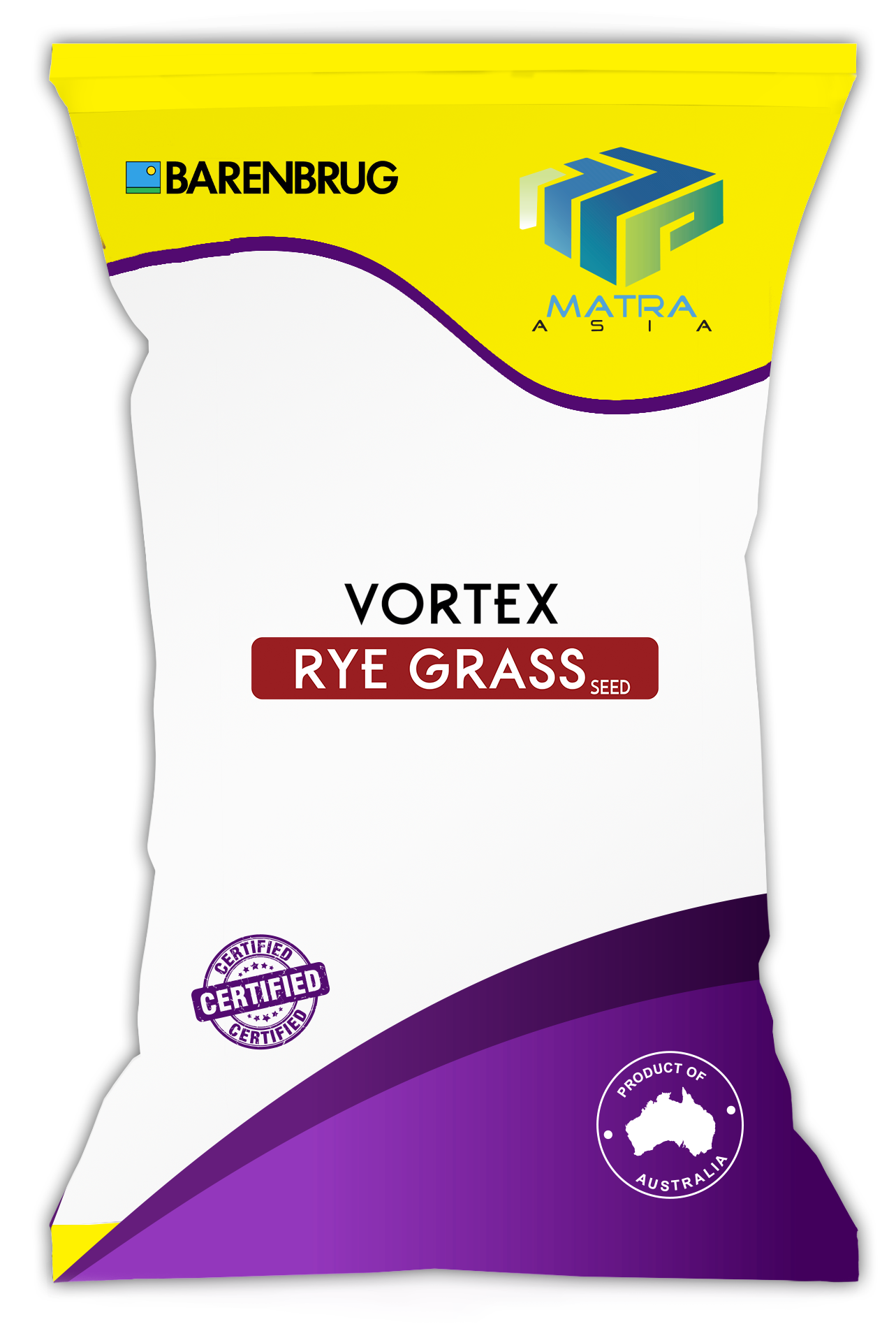
Seed Rate
8kg of ryegrass seed is required for 1 acre land.
Yield Parameters
Ryegrass harvesting is done when the crop height is 1.5 to 2ft. Depending on the area, the crop gives 5 - 6 cuttings annually and yields 70 tonnes of fodder per year. Ryegrass crops are harvested leaving 2 inches above ground level.
Maize
The maize grain and silage are a major component of feed and a standard component of livestock diets. This maize seed is used as a source of energy.
Matra Asia has two varieties of maize for both summer and spring season and are suitable for grains and silage. This maize seed is:
- Capable of surviving under unfavorable weather conditions
- Ready to harvest as early as after 110 days
- Beneficial for both Silage and grains
BENEFITS
The benefits of Matra Asia’s Maize seed are as follows:
- Excellent hybrid Production technology
- Good ability to produce a high yield in a small-time frame
- Proper tip filling of corn cob
- Strong stem, good height and good ability of crop to stand upright
- Even after reaping, the crop is green and usable for fodder
Nutritional Values
When using Mombasa Grass alongside maize, milk production during the dry season rose by 11% and 23% during the rainy season due to good nutritional values such as
- Protein 8-10 %
- Grass Energy 18 mg / kg DM
- Total Digestible Nutrients 60 %
- Dry Matter 28% as feed
Sowing Time
In Pakistan, maize crop sowing begins in February and continues till April. However, it can be sowed till June while the sowing time for autumn maize starts from the last week of July and ends in mid of August. It advised that the farmer should sow the maize seed according to the local weather.
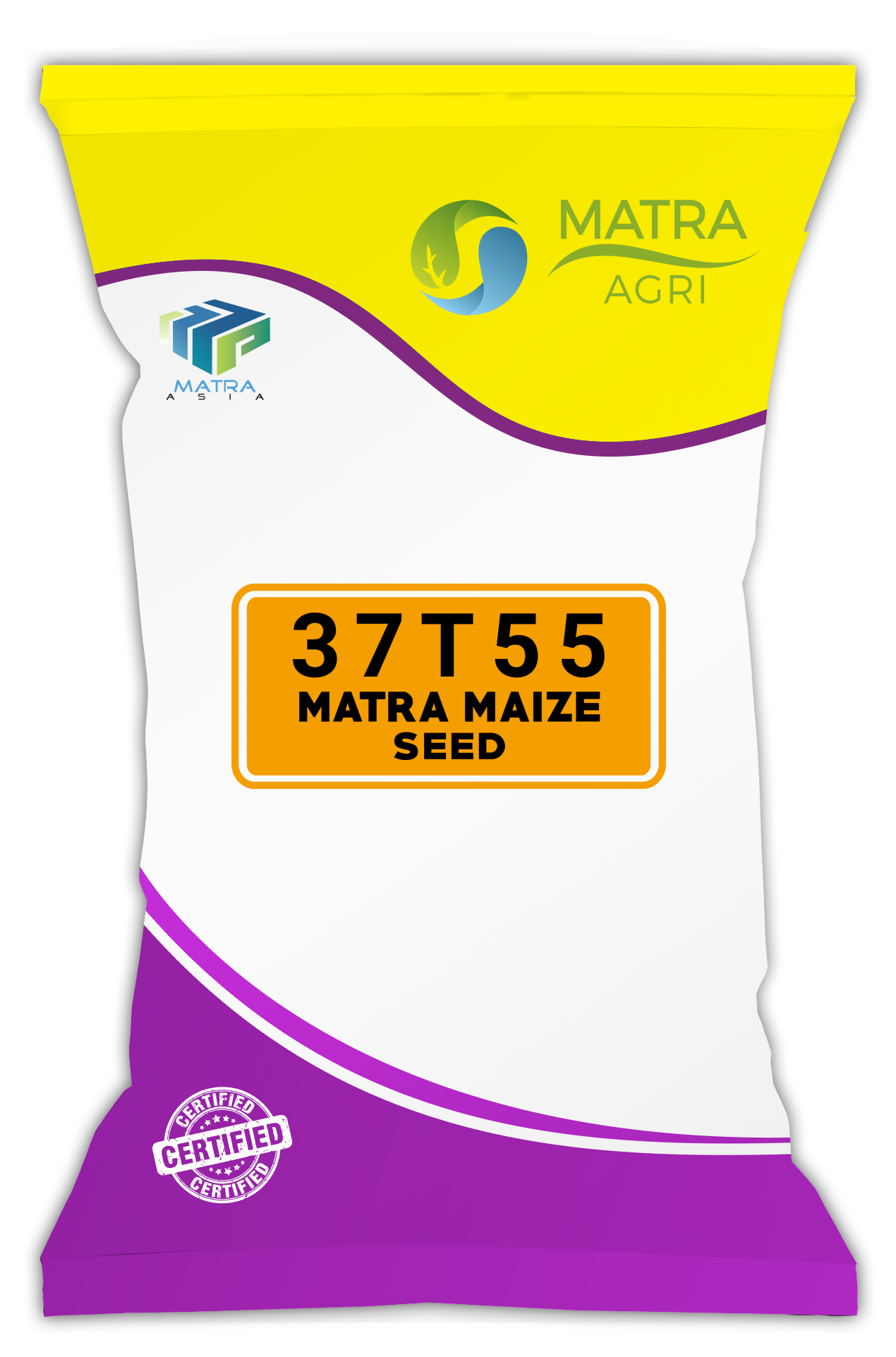
Seed Rate
10 kg of maize seed (36000 Kernels) is required for 1 acre land.
Important Instructions
Observations over the last few years have indicated that abnormal increase in the weather and temperature has given birth to the following problems in the corn and maize crop,
- Unable to produce grains
- Less production and space between grains
- Small in size
- Plants dry up quicker than usual
By providing good and decent nutrition, the plant can withstand unfavorable weather conditions. However, problems caused due to climate change cannot be blamed on the seed.
Protection from Insecticides/Pesticides
For protection from shoot fly, coat the maize seed with the suggested poison before sowing.
Sorghum Sudan
Sorghum Sudan Grass is a warm-season crop that can help in periods of low forage availability in mid to late summer. One of the main characteristics of sorghum Sudan grass is that it can grow high and reach heights of 8-12 ft.
Matra Asia has two varieties which are imported from South Africa and the United States of America.
BENEFITS
The benefits of sorghum sudan grass include:
- Full of sweetness
- More leaf to stem ratio
- Fast crop growth
- 4 to 5 cuttings in a season
Nutritional Values
Sorghum Sudan Grass has following Nutritional Values:
- Protein 8-10 %
- Grass Energy 18 Mj / kg DM
- Total Digestible Nutrients 60 %
- Dry Matter 28% as feed
Sowing Time
Sowing of SSG begins in February and continues till April. However, it can be sowed till June. It advised that the farmer sows sorghum sudan grass according to the local weather.
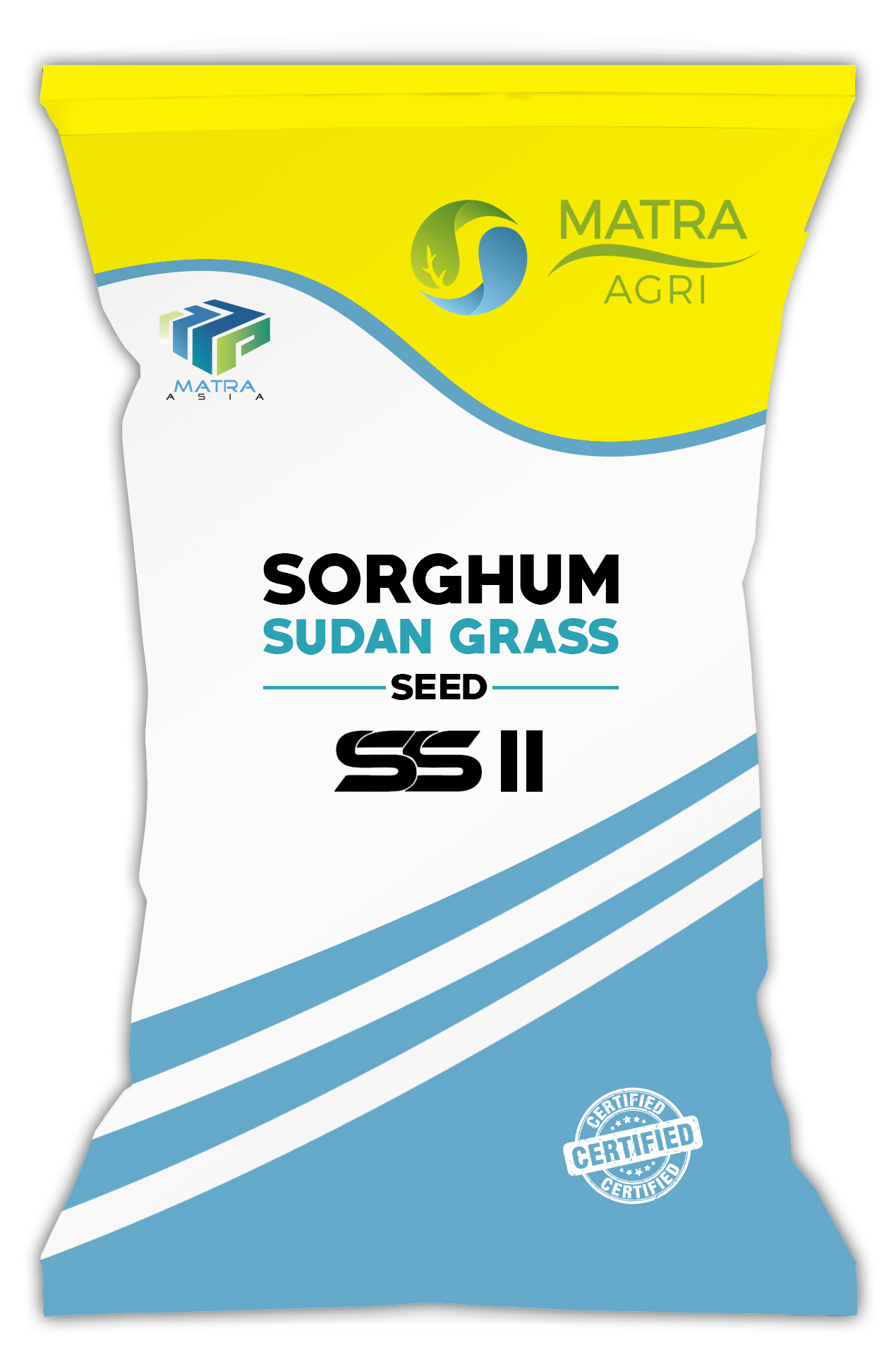
Seed Rate
10 kg of SSG seed is required for 1 acre land.
Mulato
Mulato II grass is the most popular alternative to improve efficiency in semi-intensive meat and milk systems. It is an apomictic hybrid, which implies that it is genetically stable, doesn't secrete from one budding to another, and therefore can last for many years.
BENEFITS
The fodder produced with mulato grass is full of leaves during the summer season. Mulato grass fodder also provides the following benefits,
- Increases milk & meat production.
- More leaf to stem ratio
- 5 to 6 cuttings annually
- 12 to 15 tones green fodder
- Good capacity to bear intense hot weather conditions
Nutritional Values
With Mulato II, milk production during the dry season rose by 11% and 23% during the rainy season due to good nutritional values.
- Protein 10 -14 %
- Grass Energy 18 mg / kg DM
- Fiber 26% DM
- Dry Matter 24% as feed
Sowing Time
Mulato grass sowing time starts from mid-February and lasts till October.
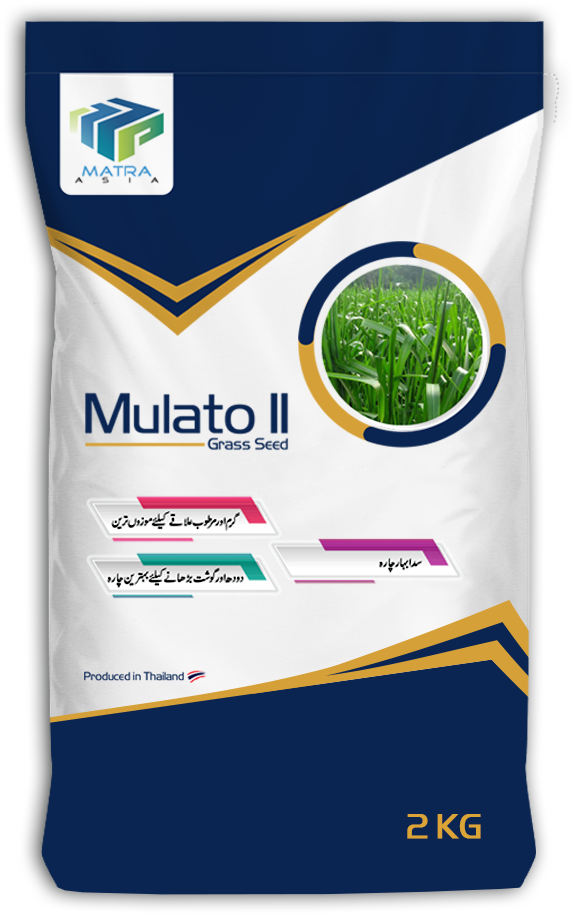
Sowing Method
Sowing of Mulato grass can be done either by direct seeding on furrows or by broadcast method.
Seed Rate
4kg of Mulato grass seed is required for 1 acre land.
Yield Parameters
Mulato grass is harvested when the crop height is 5-6ft depending on the area. The crop will give 5 - 6 cuttings annually & having yield 12 to 15 tons per cut. Harvest will leave 4 inch above ground level.
